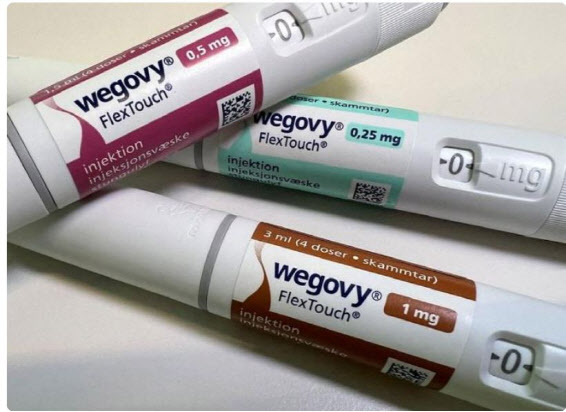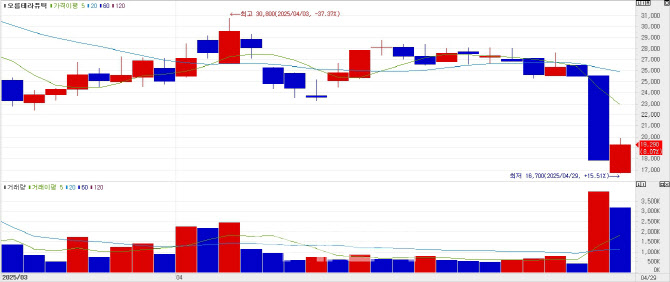Novo vs. Lilly: K-Bio Stands to Gain?
According to MP Doctor (formerly Marketpoint) under KG Zeroin, several obesity-related stocks surged, including:
Quratis +29.93%
Inventage Lab +22.20%
Raphas +12.54%
BlueMTech +10.88%
D&D Pharmatech +3.36%
Peptron +0.23%
|
The uptick followed Eli Lilly’s announcement on April 17 (local time) that its oral obesity drug, orforglipron, succeeded in a Phase 3 trial, with plans to file for FDA approval by year-end. In response, Novo Nordisk filed to expand the label for its oral drug Rybelsus to include obesity on April 21.
Originally approved in 2023 as a diabetes treatment, Rybelsus has low oral bioavailability (0.51%) compared to its injectable obesity counterpart, Wegovy, which uses the same active ingredient, semaglutide. This raised doubts about its viability as an obesity therapy. However, Novo appears determined to stake its claim in the oral obesity market, even without superior alternatives.
Industry watchers believe the rivalry may accelerate license-out decisions by global players. A notable example is Peptron, which signed a tech evaluation deal with Eli Lilly last October for its long-acting injection platform “SmartDepot.” Market speculation suggests a licensing announcement could come soon.
A Peptron representative declined to comment on contract specifics but confirmed joint research with Lilly on multiple candidates. The collaboration runs through December but is not constrained by that timeline for final agreements.
Oral Obesity Drug Data Fuels Stock Surge
Among the biggest winners were Inventage Lab and Quratis, the latter being Inventage’s largest shareholder. Quratis hit its upper limit at KRW 1,350, while Inventage briefly did the same during morning trading.
Inventage shares gained momentum after PharmEdaily published an interview on April 28 with CEO Joohee Kim, who revealed that major pharmaceutical firms, including Novo Nordisk, had reached out since April 23 in response to the company‘s latest data.
Still, the results were derived from animal (beagle) studies, not human trials. Toxicology testing is still underway. Kim noted that Rybelsus showed 0~2.7% bioavailability in beagles, translating to 0.5~1% in humans. Inventage’s IVL3027 compound recorded 24.3% in beagles, suggesting potential for proportional human absorption.
Quratis may benefit from producing the oral drug if commercialized. An Inventage official explained that IVL-PEPOfluidic relies on proprietary mass production technology, meaning any partner licensing IVL3027 would likely either adopt the manufacturing tech or use Quratis’ facilities.
Earlier this year, Quratis’ COO Jaeho Sohn stated at an extraordinary shareholders‘ meeting that manufacturing under a CDMO contract with Inventage could generate over KRW 10 billion in annual revenue.
Orum Therapeutics Rebounds After Clinical Setback
Meanwhile, Orum Therapeutics, which plunged to its daily limit on April 28 after halting trials for its breast cancer candidate ORM-5029, rebounded 8.07% a day later. The recovery came after the company swiftly unveiled a revamped pipeline strategy, naming ORM-1153, a blood cancer candidate, as its new priority.
|
At 1:40 p.m. on April 28, the company disclosed the clinical suspension of ORM-5029. Just seven hours later, it released a new development plan. CEO Seungjoo Lee said the decision reflected a strategic shift to focus on next-generation antibody-drug conjugates (DACs) with clear risk-benefit profiles.
The company maintained that it has not conclusively linked ORM-5029 to the severe adverse events seen in Phase 1 trials. Instead, it cited delays in trial progression and potential impact on return on investment as reasons for discontinuation. The sudden pivot sparked controversy, as Lee had previously expressed commitment to ORM-5029 during a March 26 investor presentation.
Orum’s new lead candidate, ORM-1153, is a first-in-class DAC developed using its proprietary dual-targeted protein degradation platform, TPD². The drug combines targeted protein degradation mechanisms with tumor-specific antibody functions.
An Orum spokesperson said ORM-1153 showed potent antitumor effects in preclinical models, including non-human primates, with a strong safety profile. The candidate demonstrated high efficacy at picomolar concentrations in target-expressing cell lines.




![엔비디아로 10배 수익 서학개미 '세금폭탄' 피하려면[세상만사]](https://image.edaily.co.kr/images/vision/files/NP/S/2025/05/PS25052500385t.jpg)


